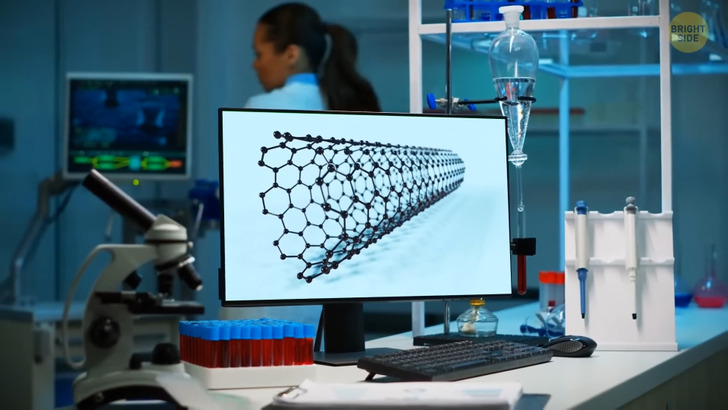12 Stories That Capture the Bittersweet Beauty of Blended Families


Hey there, fellow space enthusiasts! Buckle up for a cosmic joyride as we embark on a journey through the intriguing realm of space travel.

Now, let’s talk about one hilarious fact that might blow your mind: spaceships are not like your regular cars running out of fuel on the highway! You see, out there in the vast expanse of outer space, things work a little differently. Sure, you might find some gas, dust, light, fields, and teeny-tiny particles floating around, but here’s the catch — they’re spread out so thin that they can’t really play a game of cosmic tag with our spaceships. It’s like a gathering of introverted cosmic dust bunnies, too shy to interact with anything passing by. So, no worries about them causing any major hiccups for our space-faring vessels.
That’s right, space is like a friction-free paradise! Unlike ships in water that need a constant push to keep going, spaceships have got it all figured out. Once those engines are turned off, their momentum takes over and propels them forward at a steady pace. It’s a cosmic roller coaster with no brakes—exciting, huh? Now, why do these space travelers try to be frugal with their fuel, you ask? Well, let me tell you, launching stuff into space is no joke. It’s expensive and incredibly challenging! So, those clever space travelers do their best to minimize the amount of fuel they need to carry.

In the real world of space exploration, most spacecraft take a nifty approach. They ignite their engines at the beginning, like a fireworks show, to break free from Earth’s clutches and get to their desired speed. Once they’ve reached that sweet spot, they switch off the engines and let inertia do its thing. It’s like coasting downhill on a bicycle, when you let gravity do all the work. These engines only come back to life towards the end of the journey, when our courageous explorers need to gracefully arrive at their cosmic destinations. Following that same idea, if a spaceship would just happen to run out of fuel, it doesn’t mean it would just stop moving through space. It would just float in the same direction. That is, until it would bump into something that would shift it in its tracks, but there aren’t as many objects out there to encounter in the first place, you know.
Now, let’s talk about those flashy sci-fi movies that seem to have a serious case of engine-blasting obsession. Well, sorry to burst your bubble, but those aren’t that realistic. In the real world, spaceships prefer to conserve their precious fuel and enjoy some peaceful engine-free moments, soaking in the cosmic sights and sounds. So, the next time you watch a sci-fi flick and witness a spaceship abruptly stopping, as its engines power down, just chuckle to yourself. The producers might have taken a creative liberty or two to spice up the drama. It’s like when your favorite action hero jumps out of a flaming helicopter, unscathed — cool to watch, but not exactly rooted in reality. In the quirky realm of space travel, we must remember that the rules are a bit different. Friction takes a holiday, momentum becomes the captain, and fuel becomes a precious, heavy commodity

We’ve seen the movies and read the books. We all have at least some sort of image of what spaceships might look like in the future. But are they realistic? Let’s imagine the following scenario: a car zooming along at a mind-boggling 500 miles per hour! Not only that, it can travel a whopping 10,000 miles before even thinking about refueling. I mean, talk about an overachiever on the roads! But hold onto your seats, because this car is no ordinary run-of-the-mill jalopy. Now, if we’re talking about creating the ultimate spaceship, there’s one crucial thing we absolutely need to consider: keeping it as light as a feather. We all know weight equals dollar bills, so the lighter, the better. But hey, guess what? There’s been a breakthrough that might just solve our weighty issues: a magical substance called a “carbon nanotube.” These nanotubes are more than 100 times stronger than steel! I mean, talk about a heavyweight champion in the featherweight category!
Alright, let’s get real for a moment. We all know that space travel comes with its fair share of challenges. One of the biggest hurdles is the pesky radiation floating around out there. Back on our good ol’ planet Earth, we’ve got our trusty atmosphere protecting us like a superhero shield. But in space? Astronauts are in desperate need of some serious radiation defense! Now, you might think, “Hey, let’s wrap the spaceship in metal armor!” Well, it turns out that metals are basically the worst at shielding against space rays. Because when they collide with metal, they cause an atom party that spawns a whole new batch of radiation. That same metal meant to protect us will end up doing the exact opposite!

This is why we need to find a way to block out rays. And here’s where our trusty carbon nanotubes come to the rescue! Just imagine them as teeny-tiny chicken wire that’s so small, you need a microscope to spot it. Lighter materials are the secret sauce here, folks. When those radiation rays try to creep under the nanotube shield, they’re stopped right in their tracks. Now, here’s the cherry on top of our spaceship sundae. We want this device to be able to repair itself, right? It might not be as far-fetched as it sounds! Our genius human bodies have these itty-bitty sensors that alert our brains whenever something bad comes our way. Think of it like our own personal defense notification system. Now, imagine miniaturizing those sensors and putting them in our new ships. Each sensor can send messages to the spaceship’s computer “brain.” If something needs fixing, the computer can give the ship a gentle nudge and say, “Hey, buddy, time to get that wrench out!”
But what’s with all this fuss about sending spaceships outside our planet? Where are we headed anyway? Well, NASA is cooking up some pretty awesome plans to send humans on epic adventures to asteroids and even Mars! Now, let’s start with Mars, the ultimate scientific playground and a prime spot for exploration. This red planet is like Earth’s funky cousin, with a similar history and evolution. By studying Mars, we can unlock secrets about our own home and where it’s headed. Plus, did you know there’s a possibility that Mars once had the right conditions for life? Imagine if we find evidence of creatures out there!

We’ve already had robotic explorers checking out Mars for decades, but our journey to send humans there starts a bit closer to home, aboard the International Space Station in low-Earth orbit. Our trusty astronauts up there are helping us fine-tune the technologies and communication systems we’ll need for deep space missions, including Mars. Oh, and they’re also teaching us a lot about how the human body reacts to space and how to keep our space adventurers healthy and happy. And let’s not forget about our awesome ride to Mars! But why should we check out the red planet in the first place? First off, Mars is the coolest spot in our whole solar system. It’s way more accessible compared to other planets, making it like the low-hanging fruit of cosmic exploration. Exploring Mars could help us unravel the mysteries of life itself. We might stumble upon some mind-blowing answers about how life originated and evolved, which is pretty exciting. And hey, who knows? In the distant future, Mars might even become our go-to place for survival, like a backup Earth or something.
We’re counting on the mighty Space Launch System rocket and the trusty Orion spacecraft to get us there. These devices will be the powerhouses of space travel, making sure we have the means to transport cargo and humans to the red planet. But hold on, we’re not alone in this cosmic adventure. We’ve got a whole squad of robotic spacecraft and rovers cruising around Mars, giving us insights into its secrets. All across the country, a bunch of super smart engineers and scientists are working their socks off to develop technologies that our astronauts will need to live, work, and boomerang back from Mars.











